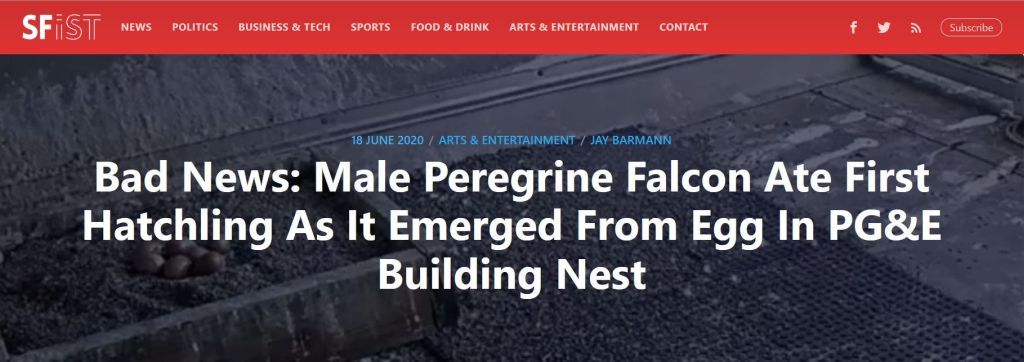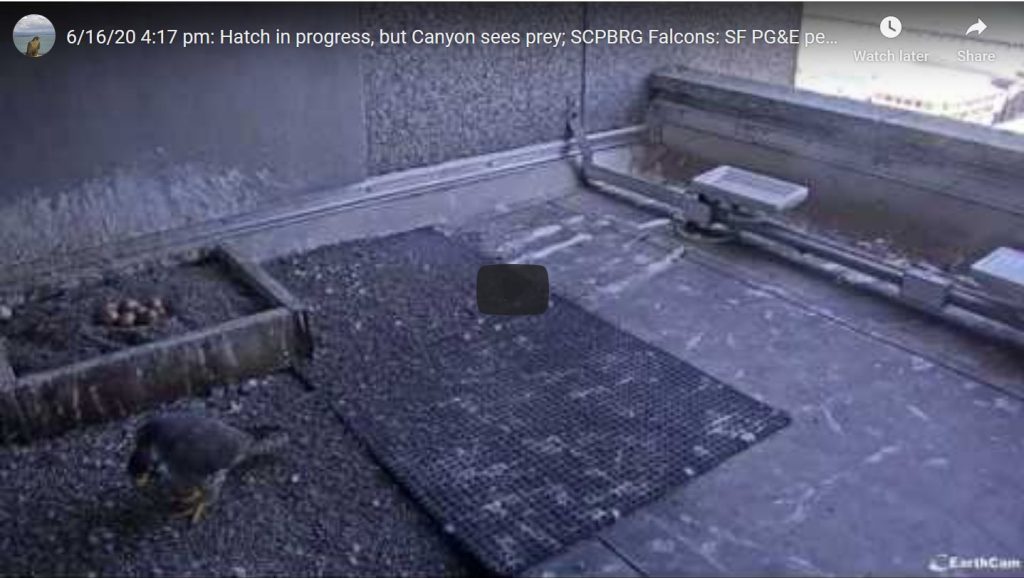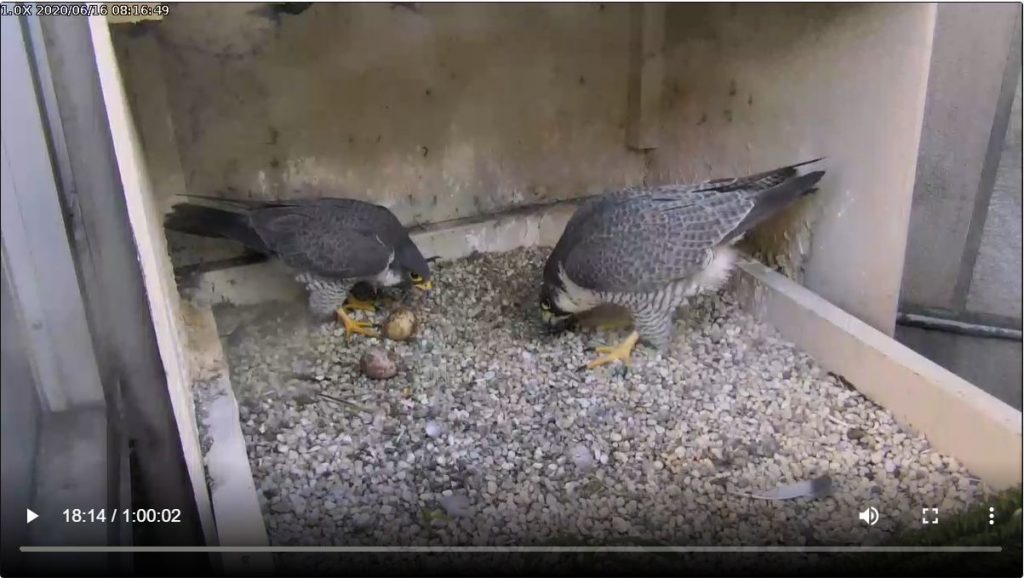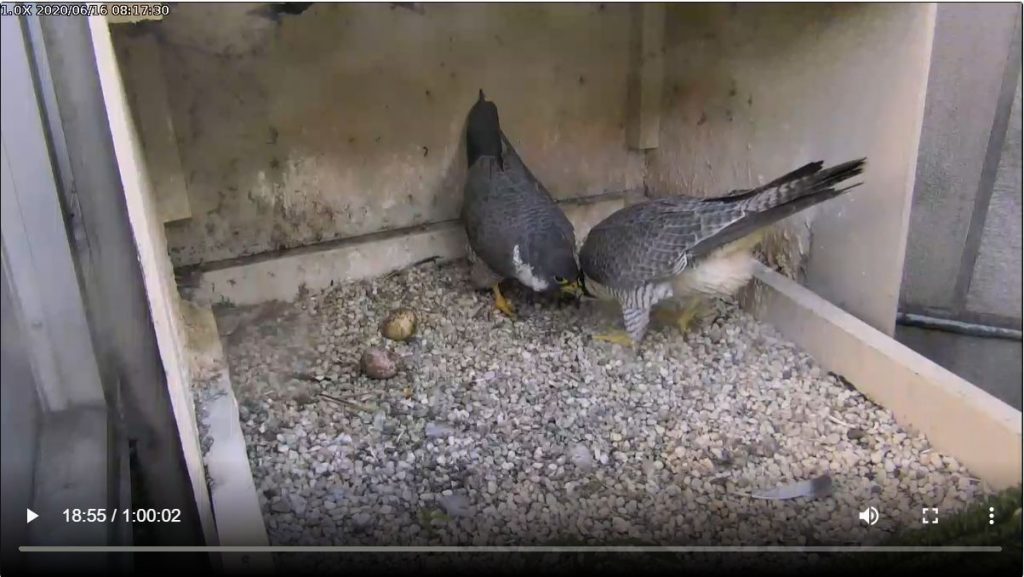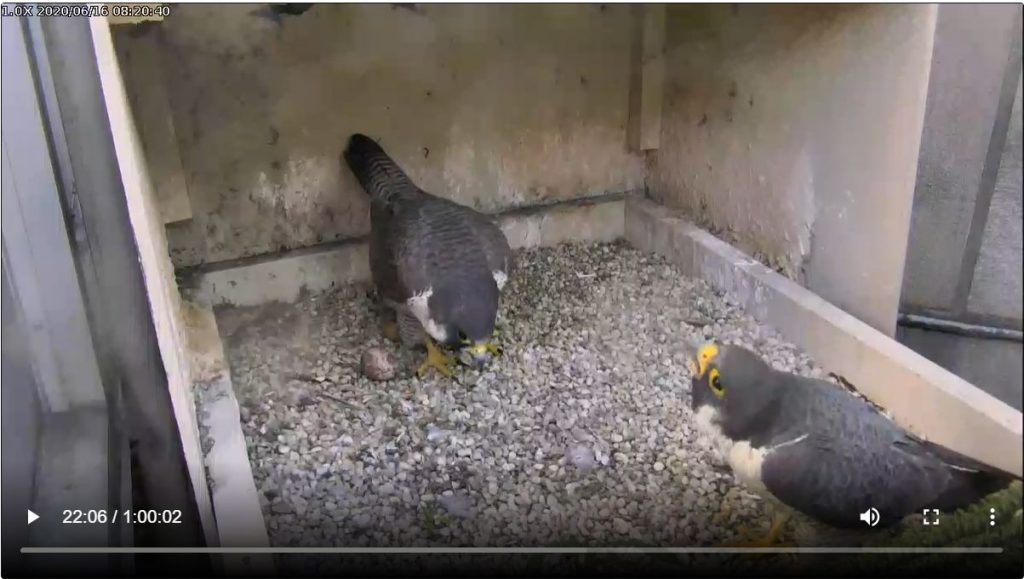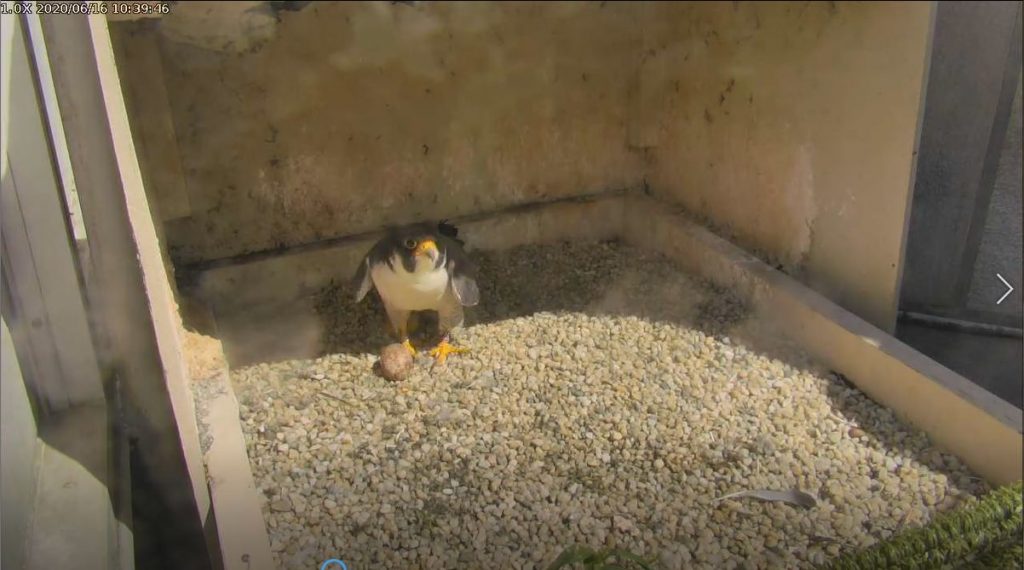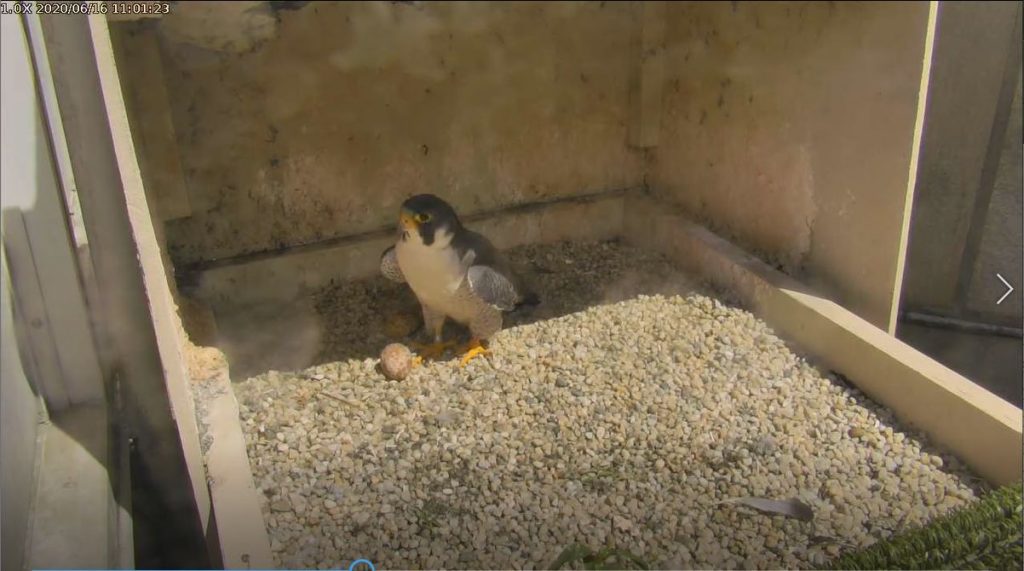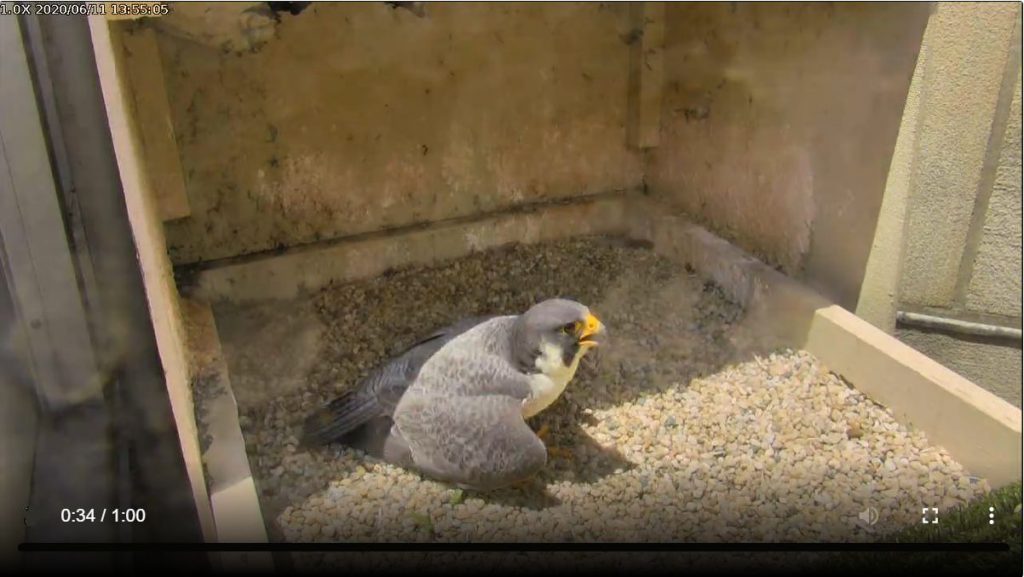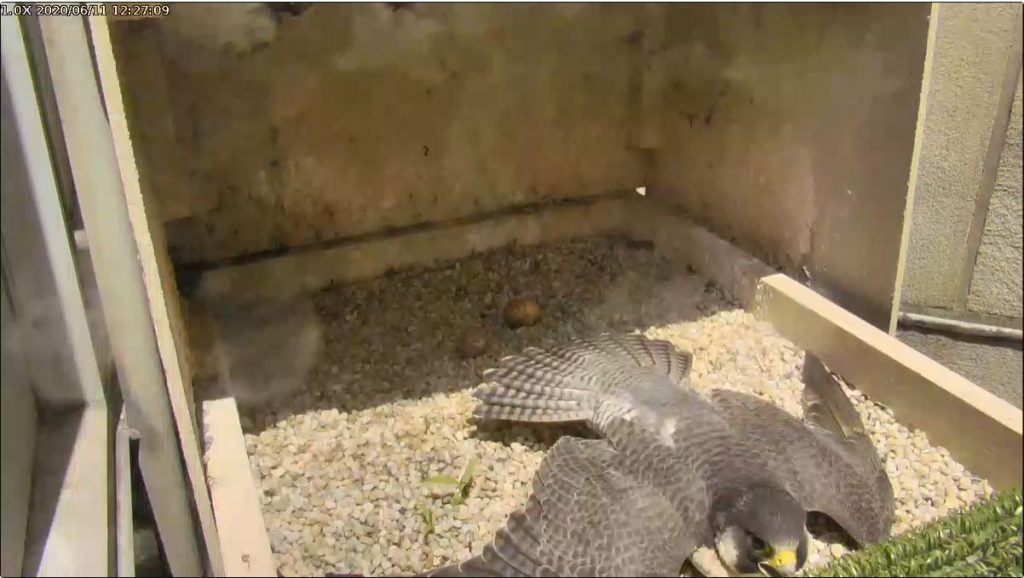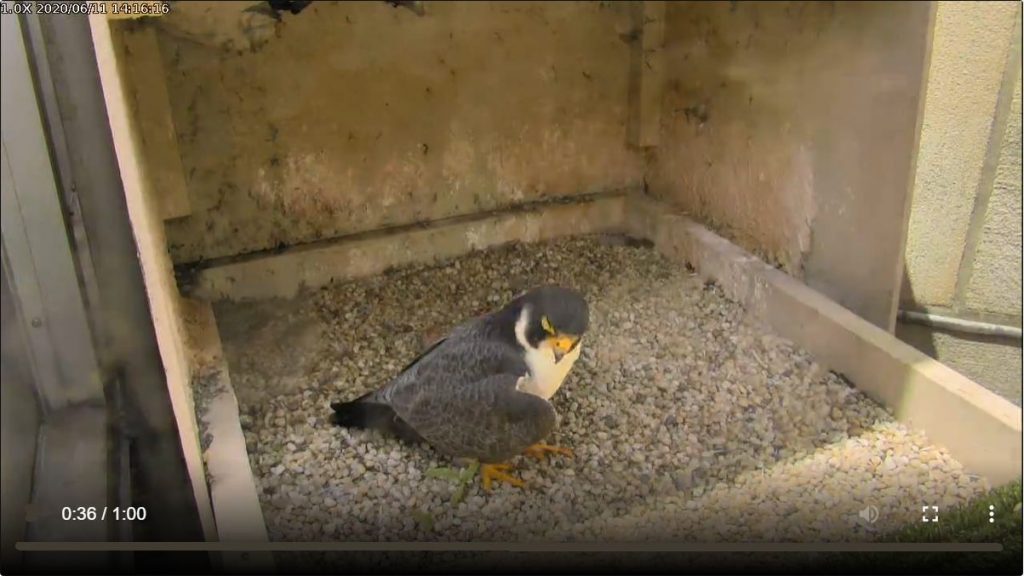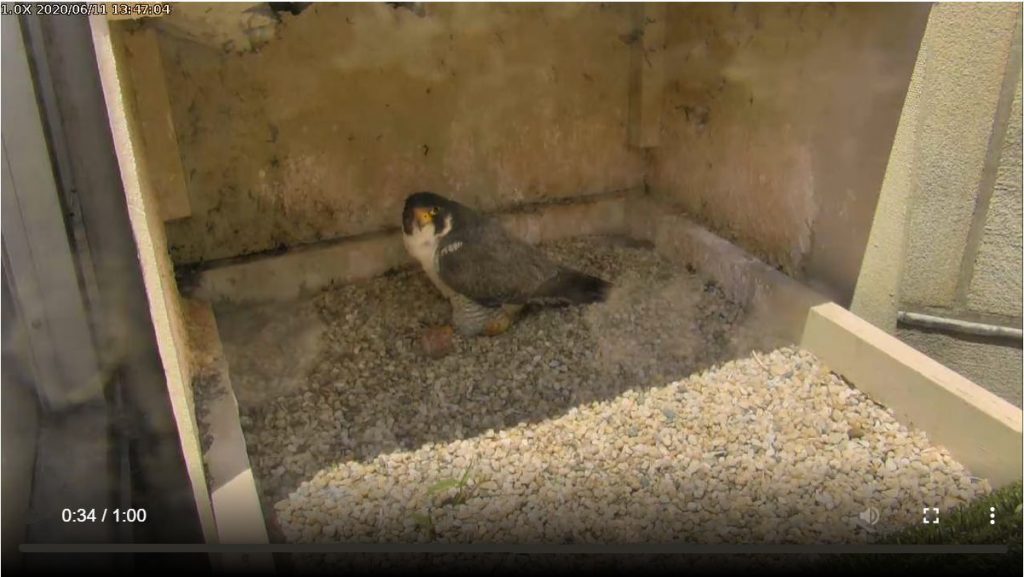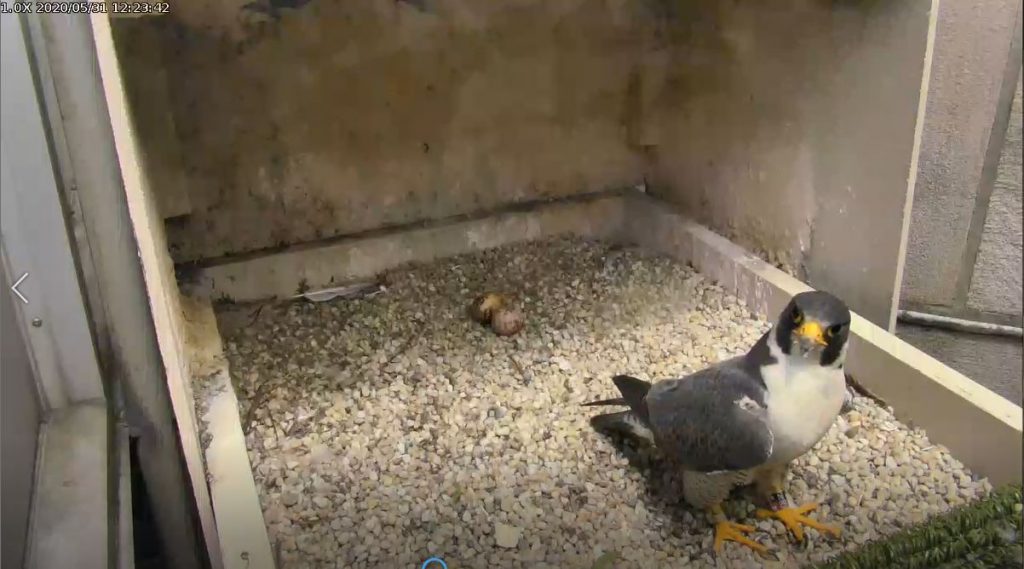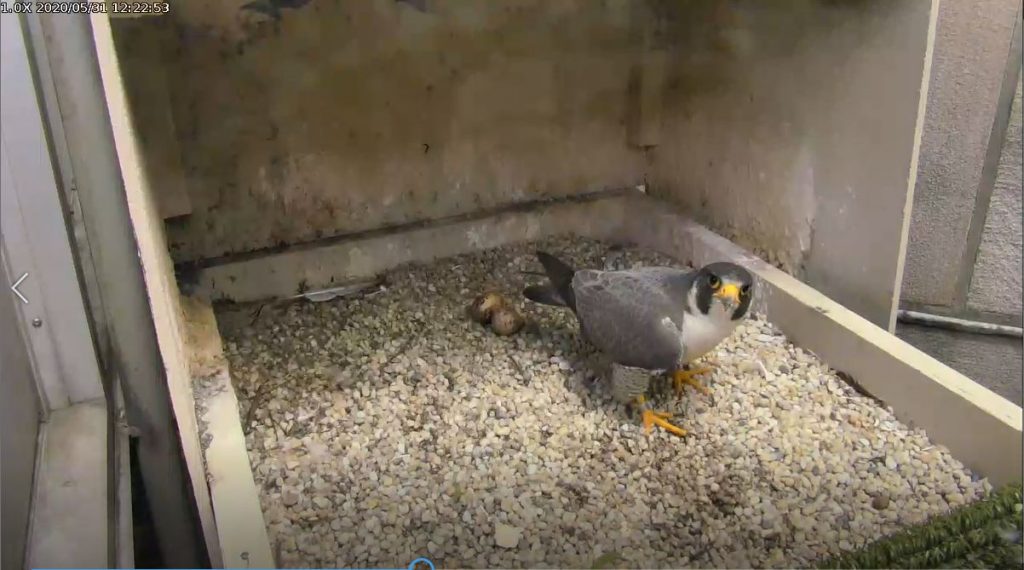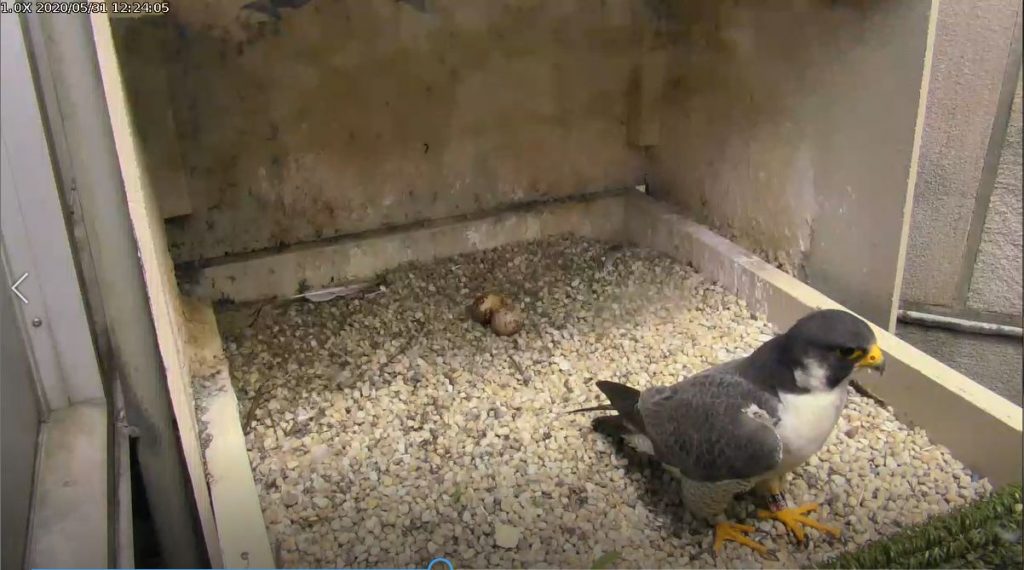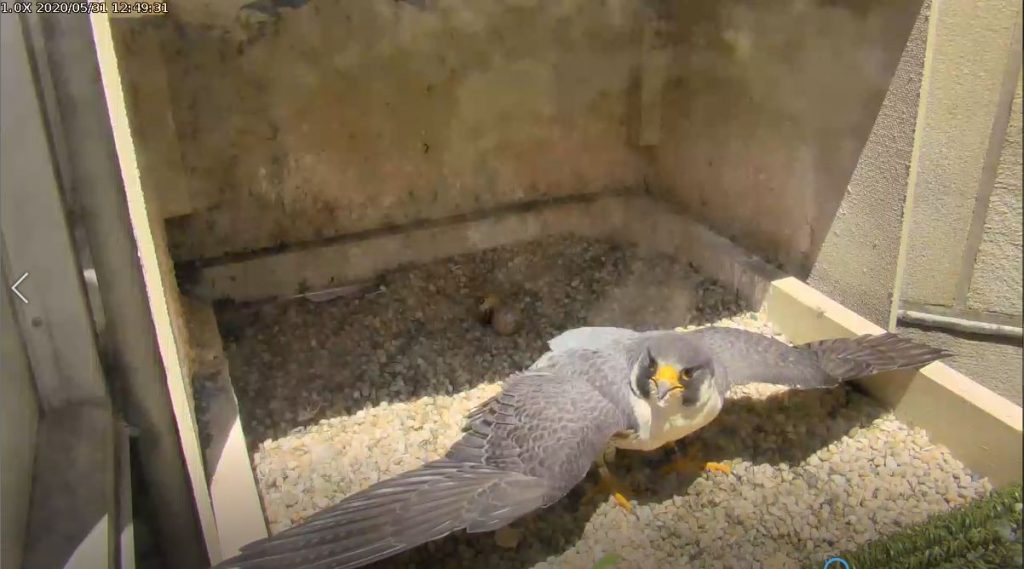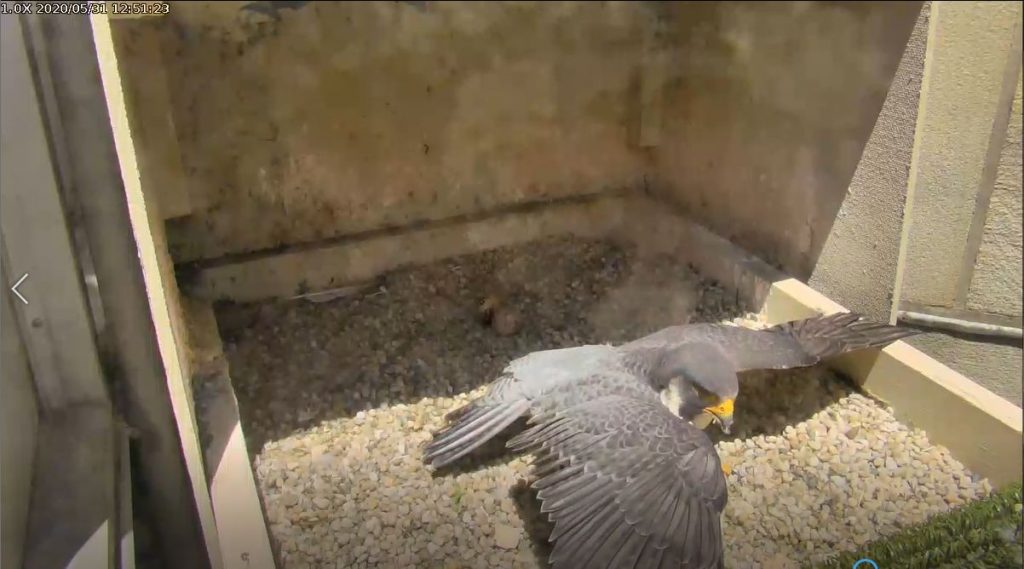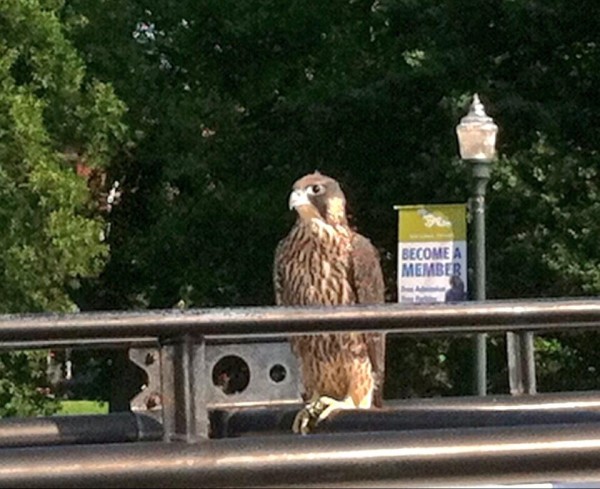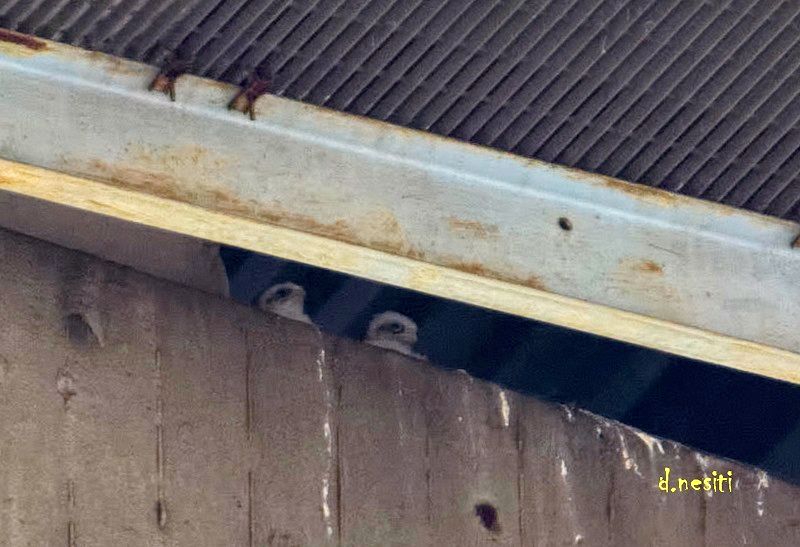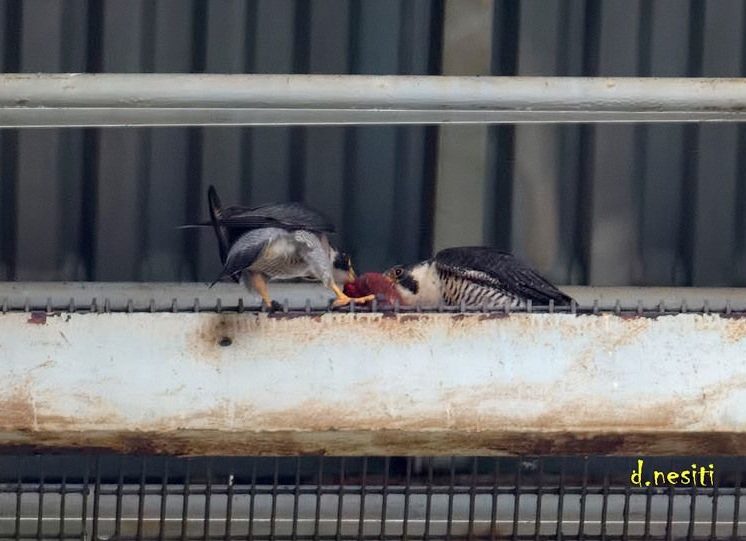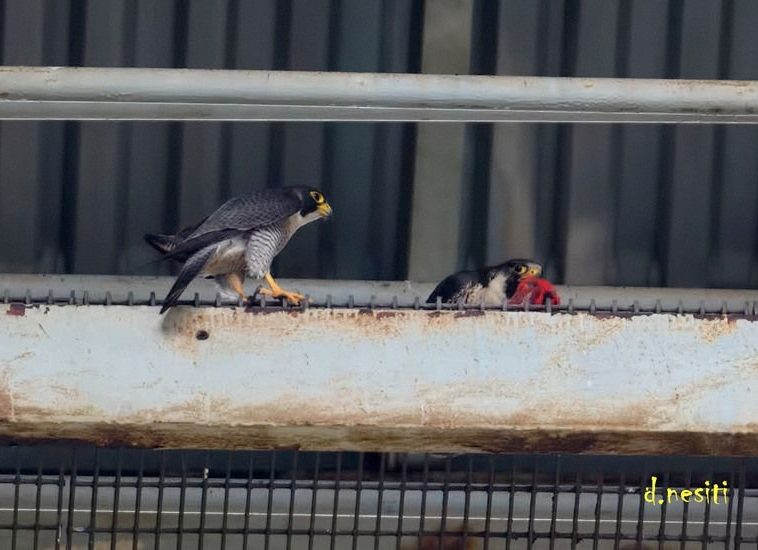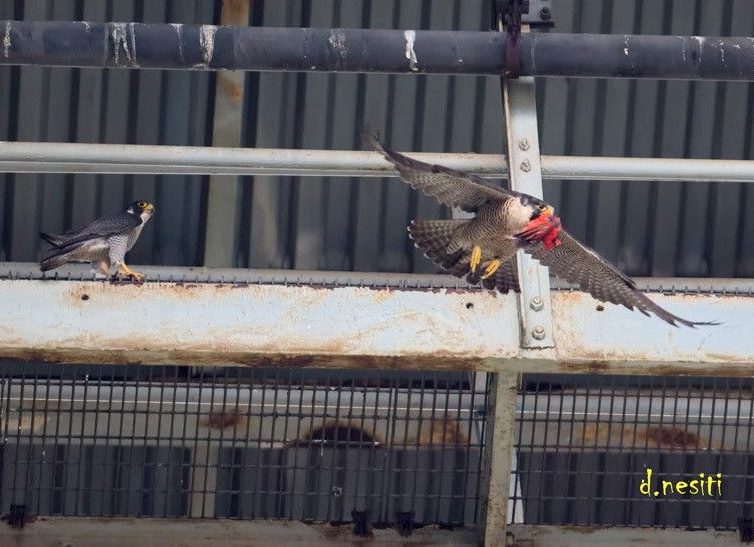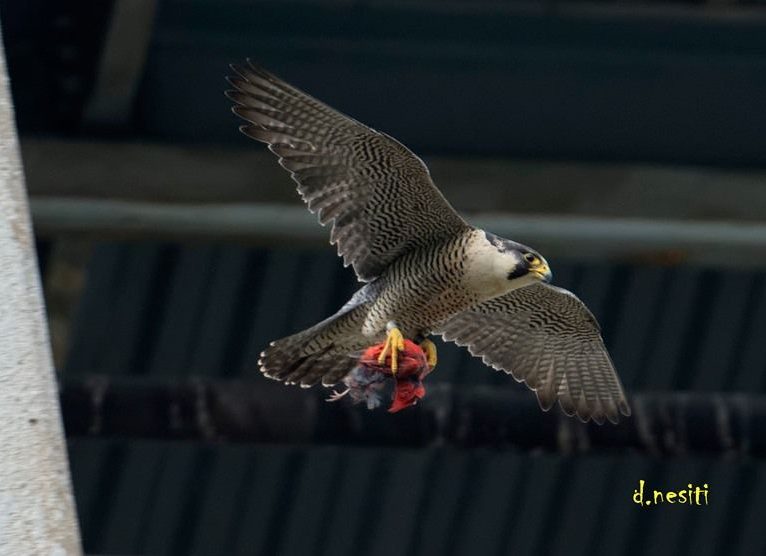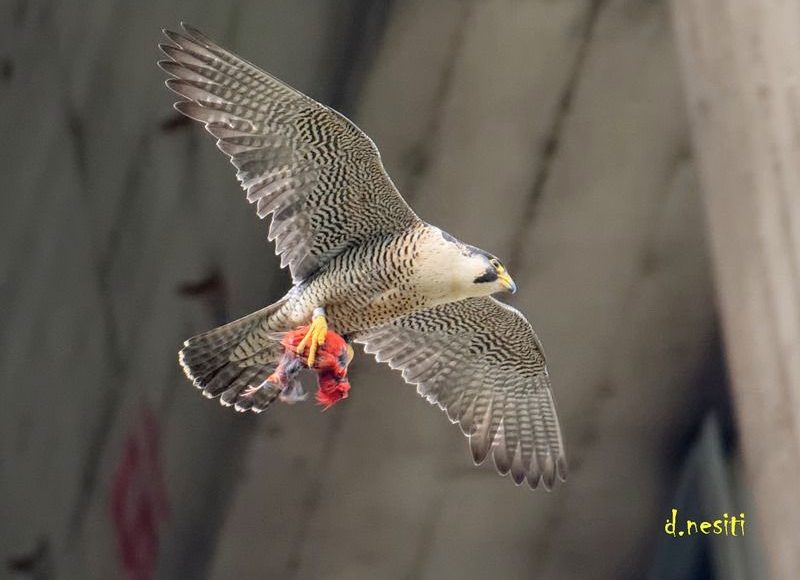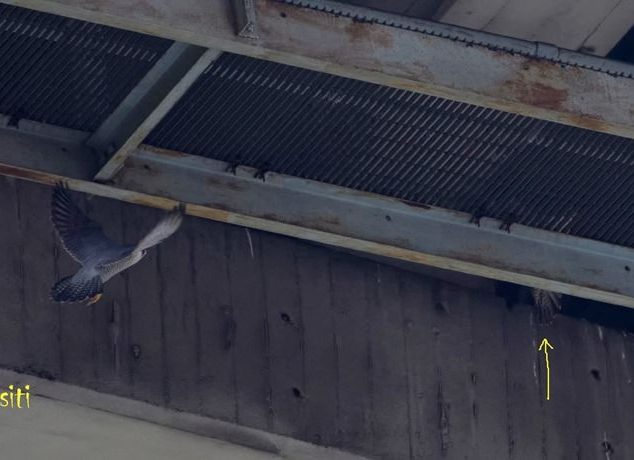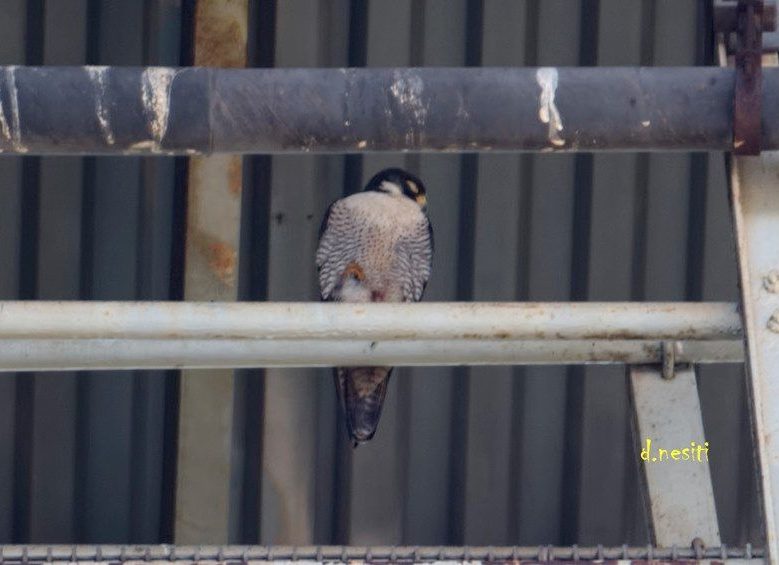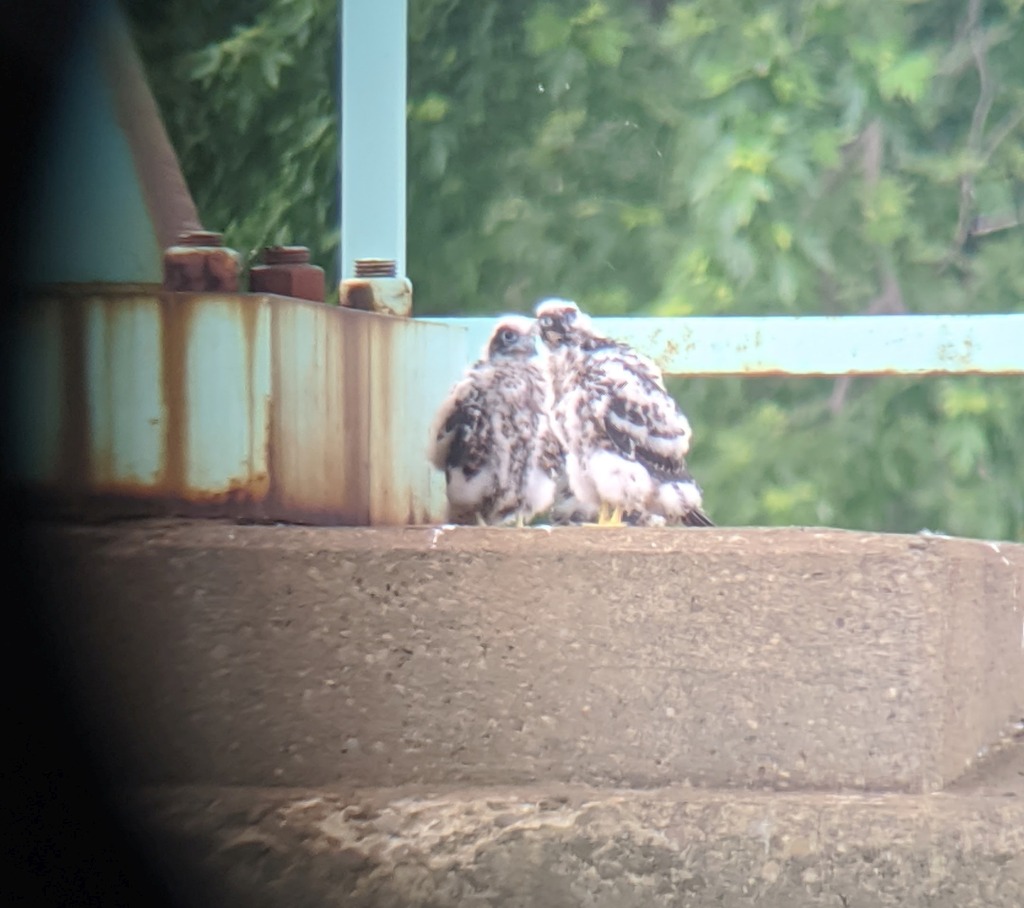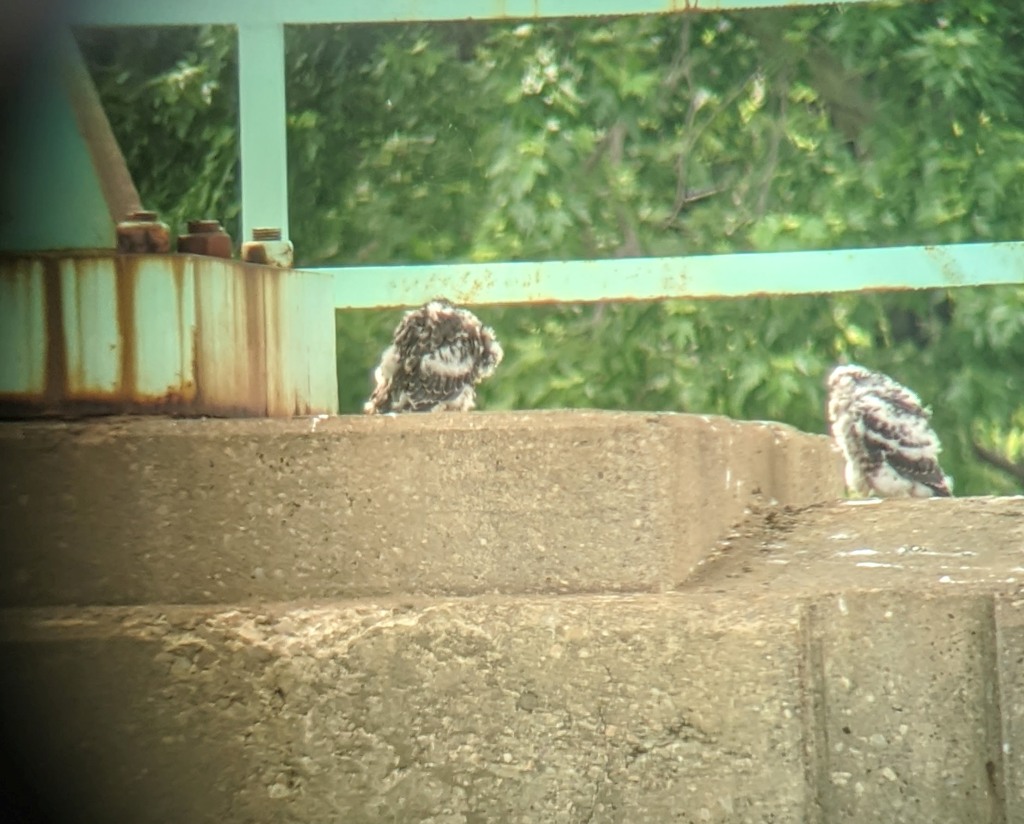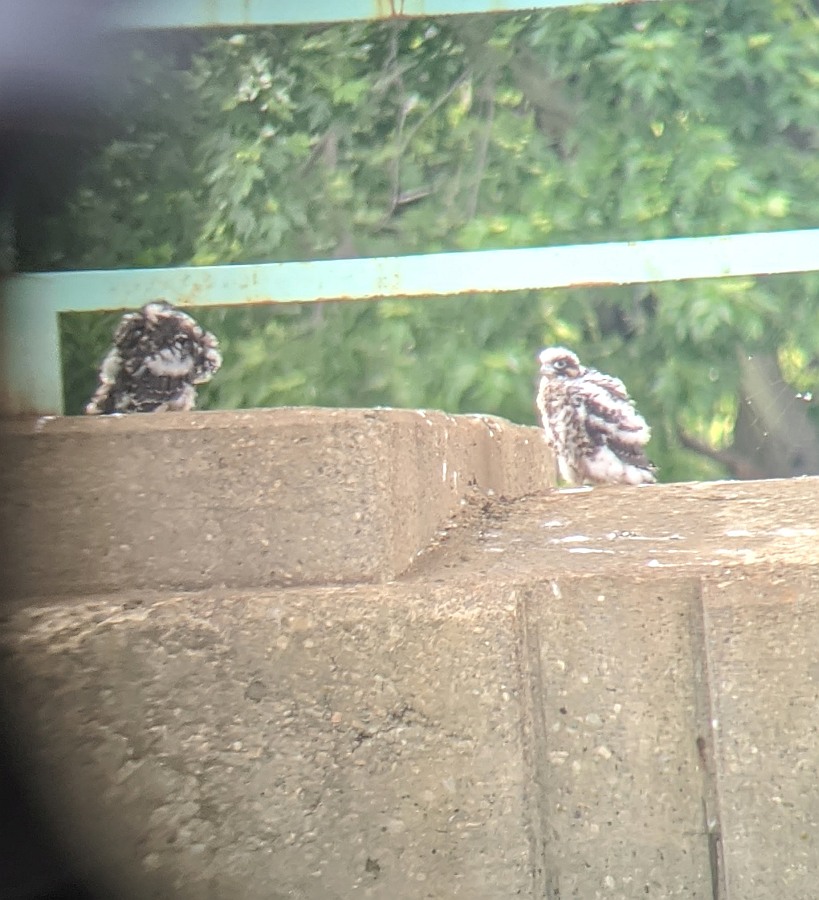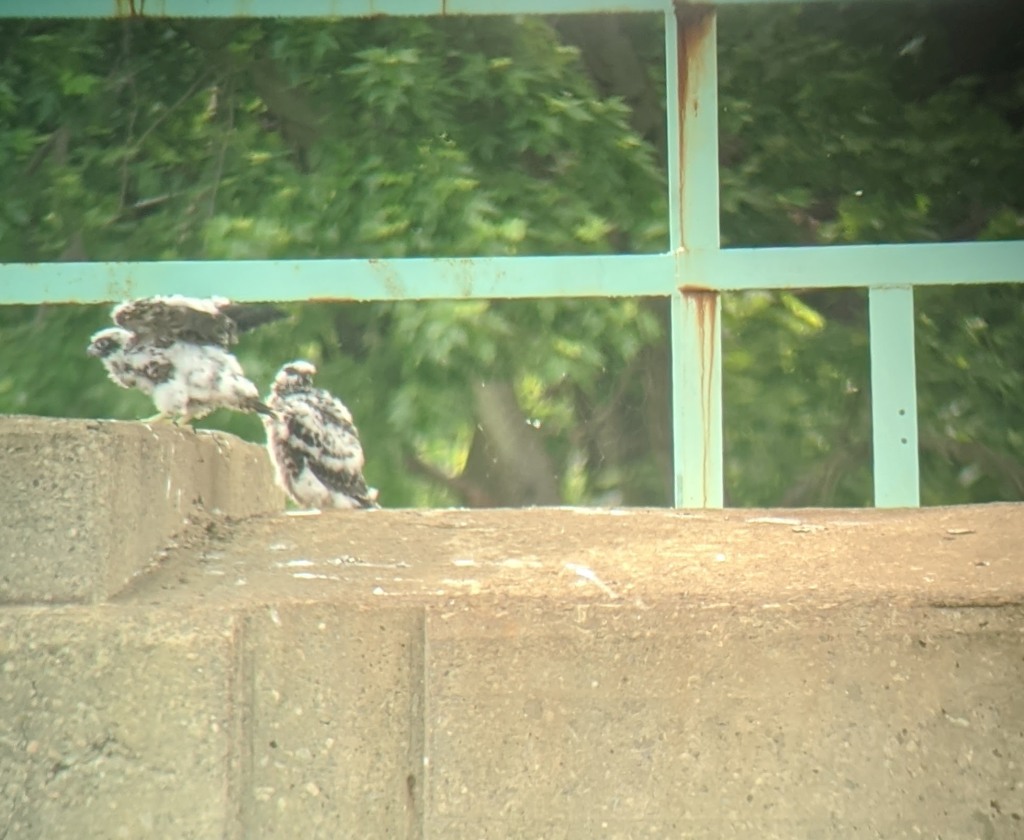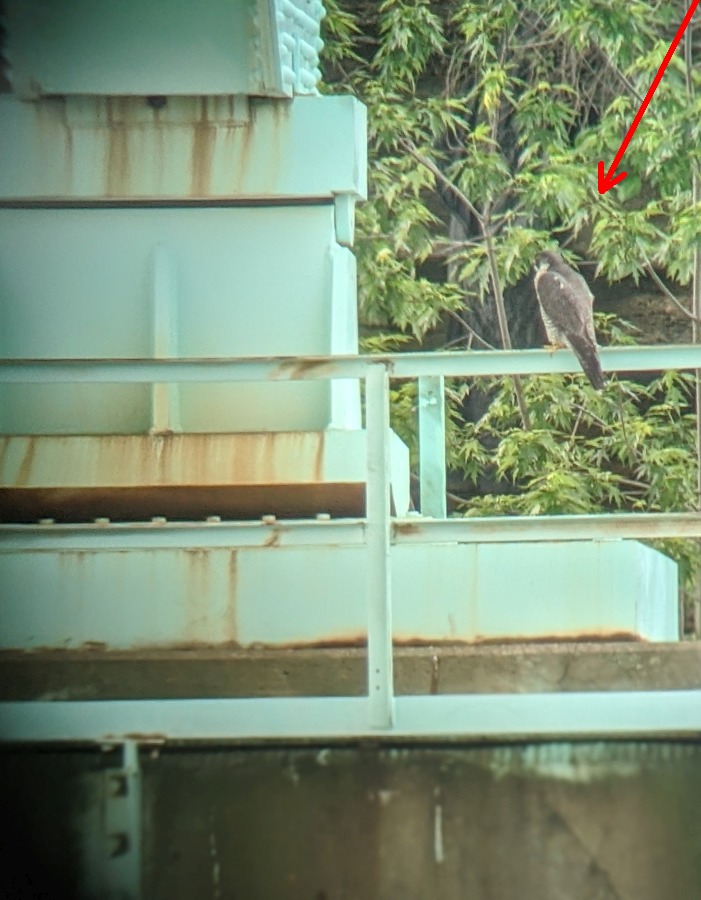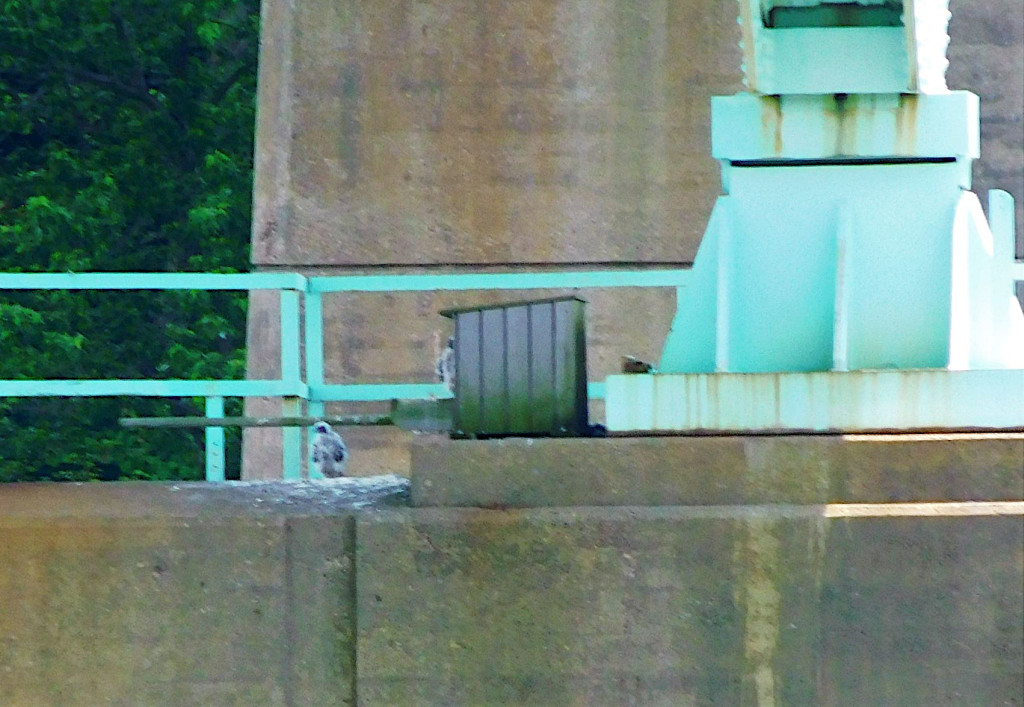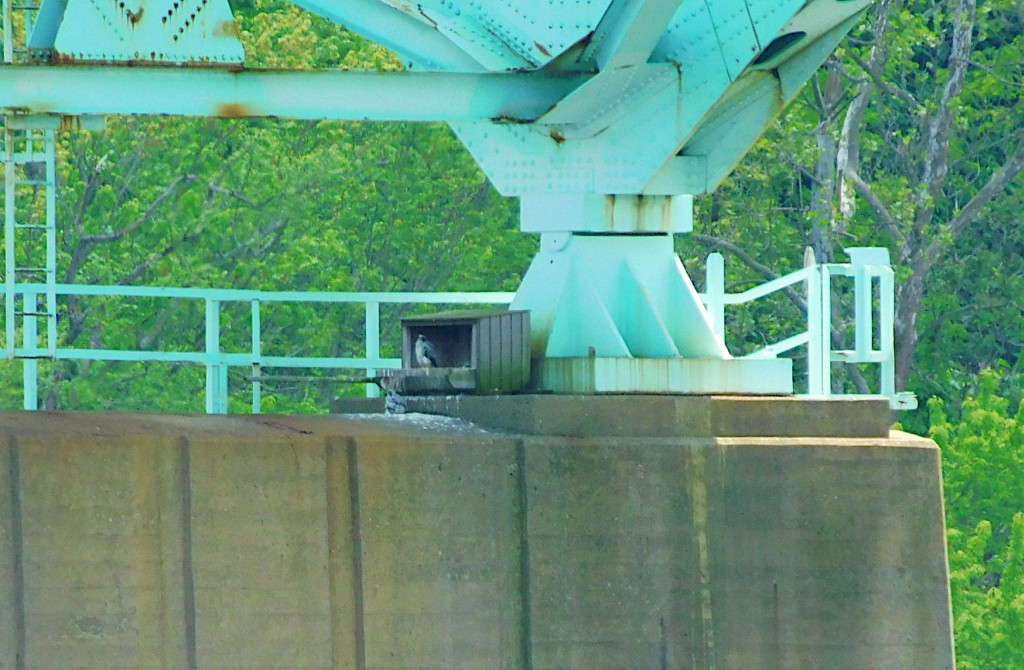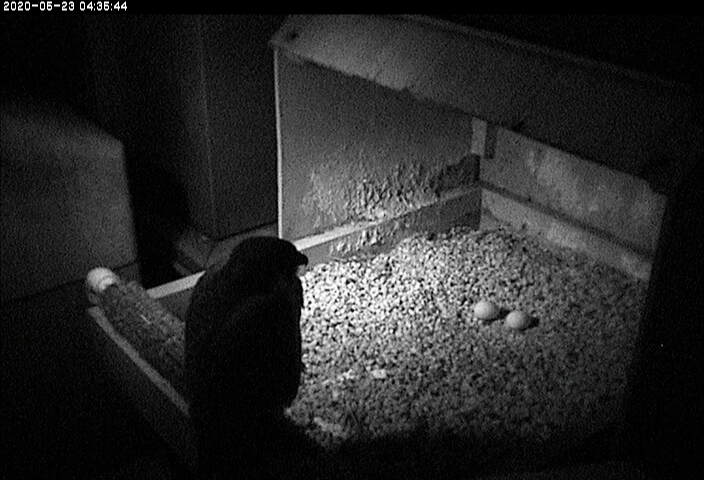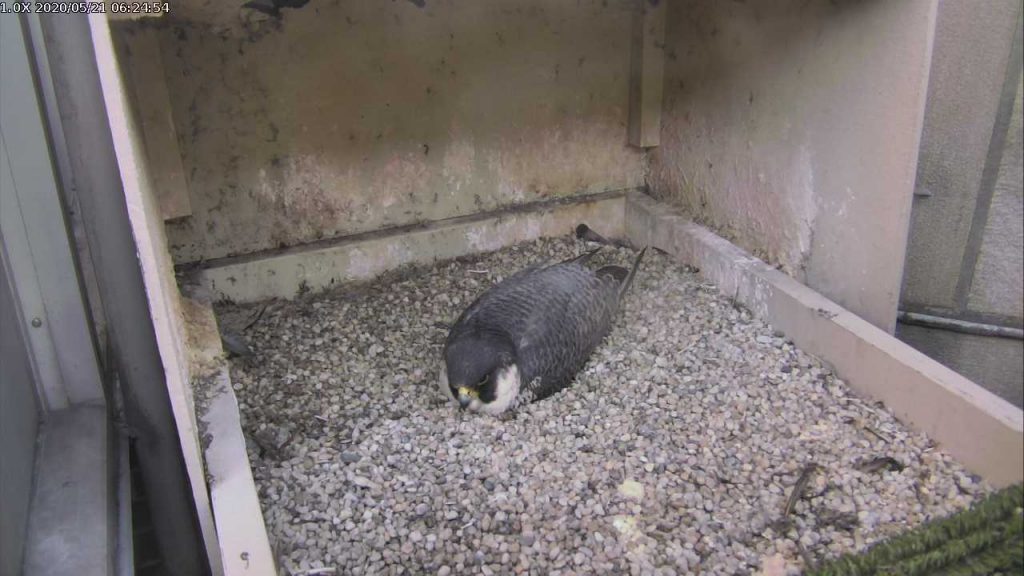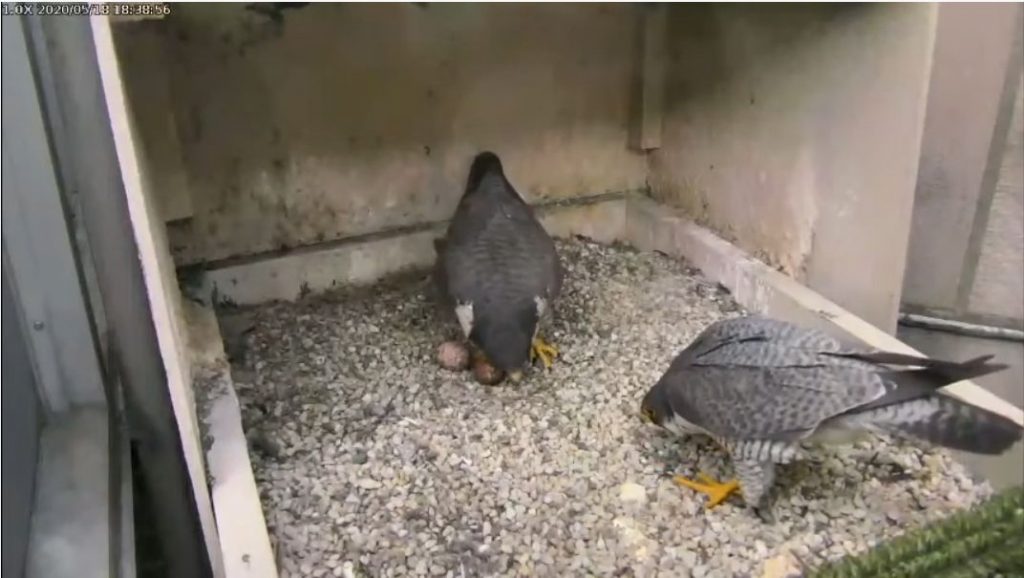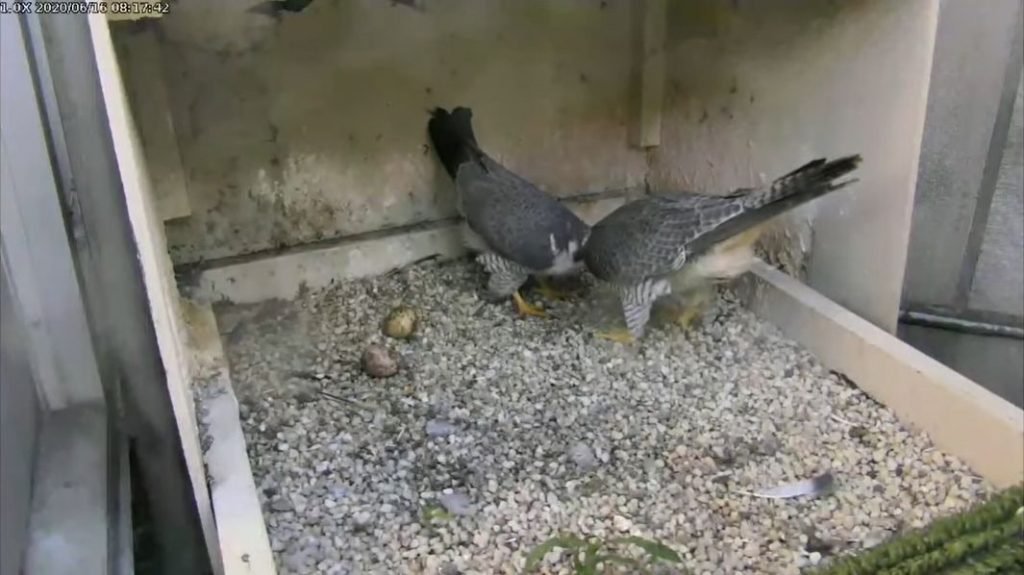
22 June 2020
Though the peregrine nesting season has failed at the Cathedral of Learning, Morela continues to visit the nest and bow with her suitors, Terzo and Ecco. In a normal year this activity would have ended with egg laying in March. This year, over a period of (now) four months, we’ve been able to observe individual behavior in the two males and Morela’s relationship with each one.
Indeed their relationships are different. I’ve noticed that during the longer courtship sessions Morela bows closer with Ecco than she does with Terzo.
During this five minute bowing session on 16 June, Ecco and Morela turn their heads side to side and nearly touch beaks. This is a more intimate form of bowing than merely bobbing up and down.
On 18 June, Terzo initiates a three minute courtship session that lacks such a close approach.
Since we are humans, not peregrines, we don’t know if the behavioral difference is due to the males’ personalities or Morela’s chemistry with each one. But we can see that Morela comes closer to Ecco.
p.s. This month Ecco has been bowing with Morela before dawn! Click here for a bowing session at 5:30am on Sunday 21 June.
(photos and video from the National Aviary falconcam at Univ of Pittsburgh)
